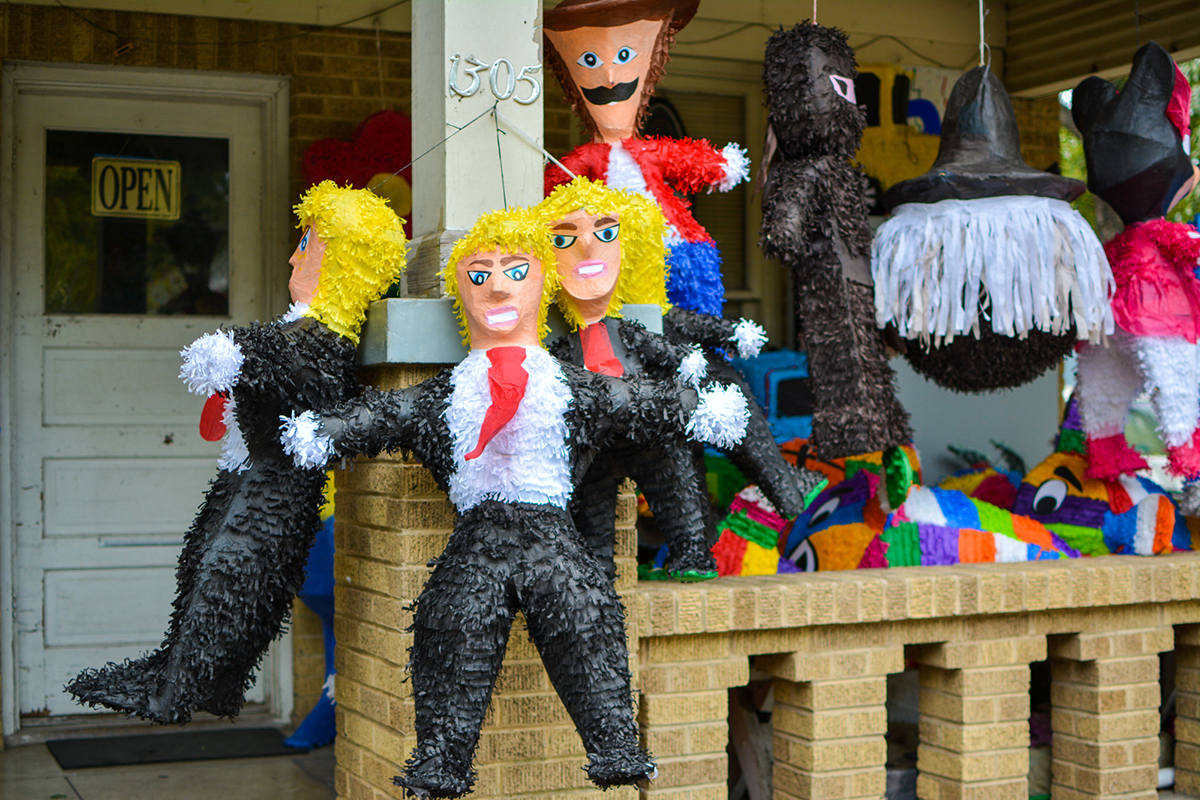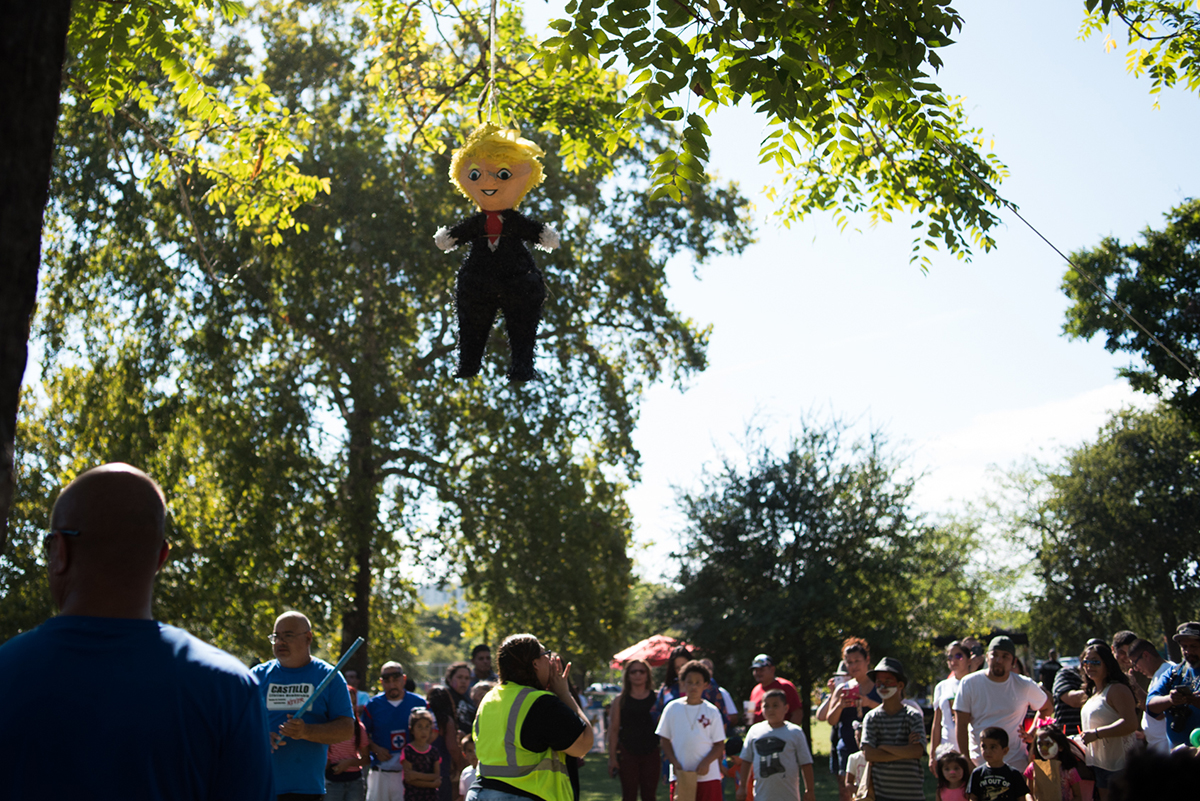Trump Piñatas Gain Popularity as Anger Soars
By Jackson Prewitt
Reporting Texas

Donald Trump piñatas displayed outside Piñata Party Palace on East Cesar Chavez Street in Austin, Texas. Ashley Ephraim/Reporting Texas
Jorge Salazar’s Piñata Party Palace on East Cesar Chavez provides an outlet for some Austinites to vent their frustration about presidential candidate Donald Trump’s openly expressed anti-immigrantion sentiment.
It started last year, when an elderly man walked into Salazar’s piñata store and asked him for a human-shaped Trump piñata so that he could “beat the hell out of it.” Salazar realized at once that Trump’s presidential race meant big business.
Trump’s infamous comment about building a great wall across the Mexican border to stop illegal immigration infuriated a lot of migrant communities.
Salazar placed a huge order for Trump-shaped piñatas after he sold his first batch of the life-like caricatures within a week. “The demand for Trump-shaped piñatas has quadrupled in the last few months, and people are buying them with the sole purpose of beating them lifeless,” he said.
Some people worry about the sociological consequences of the increased levels of anger and nastiness manifesting around Trump as the election approaches.
Miguel Levario, an associate professor of history at Texas Tech University, says that the Trump-shaped piñatas originally served a benign purpose. They served “as a response to (Trump’s) bigoted remarks aimed at people of Mexican descent and the plight of migrants,” Levario said.
However, Levario said, as the piñatas gained in appeal, it became more about the physical act of hitting the effigy and expressing disapproval of Trump’s candidacy.
“I think the use of the piñata to thrash Trump is a very American co-option of the cultural tradition to fit its own narrative and agenda,” he said.
Salazar said most of the customers who buy the Trump-shaped piñatas are white Americans who are upset about everything Donald Trump stands for.
Traditionally, piñatas do not have a violent association.

A crowd gathers to smash a Trump piñata at Chicano Park in East Austin on October 9. Adults destroyed two of the piñatas during a Sunday afternoon lowrider car meet-up. Graham Dickie/Reporting Texas
“Piñatas aren’t necessarily an act of aggression towards a negative figure or image,” Levario said. “Their symbolism is far more complicated than that and less dark.”
One group that found the middle ground is the Texas A&M Anti-Racism Club. The group serves as a way for students to protest what they perceive as racial injustices on campus.
After Trump made several comments that were viewed by some people as racist, club members planned to protest by buying a Trump piñata and hitting it. As word got out, they received criticism from both students and online communities. They then decided to allow students to stuff the piñata with written thoughts on the current political landscape.
Emilio Bernal, the president of the group, said, “Our message is not one of violence. We do not want to physically attack an effigy.” The organization recognized the double standards that existed in the form of Trump-shaped piñatas. In their efforts to denounce violence they were in fact engaging in it.
Bernal pointed out that in 2008, students at Texas A&M University threw eggs at a cutout figure of then presidential nominee Barack Obama.
Despite these concerns, people will flock to Salazar’s Piñata Party Palace as the presidential election intensifies. The excitement surrounding the piñatas does not seem to die down any time soon. Salazar estimates that he will sell 75 more before the Nov. 8 election.